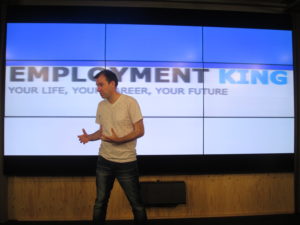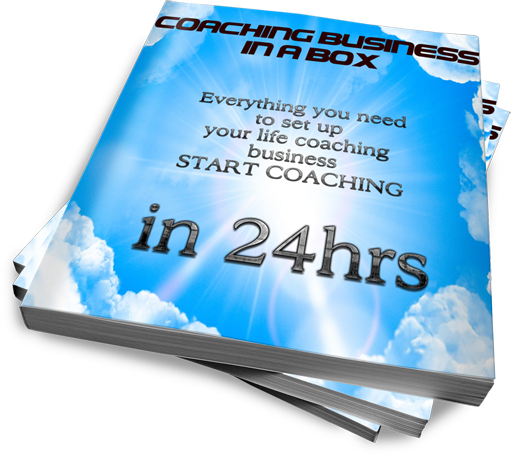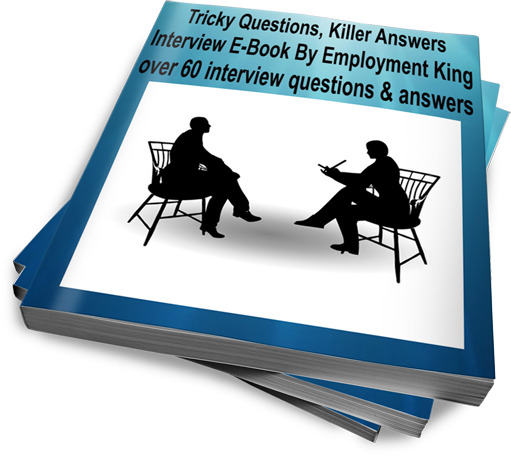Interview success is easy to achieve, all the interviewee has to so is follow these 3 steps for interview success.
Career professionals who can’t get over the interview hurdle do one of 3 things wrong;
1 they allow interview nerves to create procrastination – this leads to the applicant being lazy, they don’t prepare for the job interview, they rarely practice answering tricky questions and they focus on the negatives of previous interviews which creates a failure state
2 they don’t have a unique selling point – a lack of a unique selling point creates a boring interview. Interviewers are looking for an applicant to stand out, to make a differences, someone who is unique and interesting
3 they don’t structure their interview answers – a generic interview answer creates disinterest, an answer that goes on and on turns interviewers off and an interview answer with no structure creates confusion
This 3 step process that you are about to uncover, for interview success, will put the power back in your hands, you will win more interviews and gain more job offers
Create Interview Confidence Instantly
Your mind, to teach you how to react to a situation, searches for a “frame of reference.” – this is how I reacted last time, so I will react in the same way.
Successful interviewees have a positive frame of reference for the job interview, but most people don’t. The initial frame of reference for this public speaking event, is often, standing in front of your class at school, feeling embarrassed and getting shouted at by the teacher.
This state creates interview nerves and with each failed interview your confidence for job interviews dramatically drops, until the thought of a job interview sends shivers up your spine.
You need to create a new confident frame of reference. This technique uses your minds creativity and visual skills to change your emotional response to the job interview – increasing your confidence
- Step 1 – think of an interview (this will be created as a negative visualisation in your minds eye. Often this will be a coloured movie, a movie of you failing and looking embarrassed)
- Step 2 – pause this movie, move it away from your minds eye, so you can see the corner of the movie (
- Step 3 – place the picture of the movie in an old frame and drain the colour from the movie
- Step 4 – push the movie further and further away from your minds eye, so the image gets smaller and smaller, more out of focused until it is a dot on the horizon
- Step 5– create an image that represents you being your best at a job interview; you looking confident, answering questions well and having great rapport
- Step 6 – make this image big and bright, vivid and strong, add sound and move the movie so it is where the old image use to be
- Step 7 – imagine the old movie and follow steps 1-5 but this time do it quicker and quicker so it moves to the horizon in an instant and in a quick of a flash move the positive image towards you replacing the old image
- Step 8 – complete this process 10 time, until you only see the positive movie when you think of a job interview
Create an Interview Selling Point
Everyone who attends the interview for the position you are applying for meets the job criteria (or they wouldn’t be offered an interview).
In the job interview you have to be seen by the interviewer as a better applicant then the rest of the interviewees. To be offered the position you need to offer the interview more then what they want, additional extras, you need to sell yourself through a unique selling point.
If you were offered two cars for the same price, which car would you take? Car 1 – standard model or Car 2 standard model plus free insurance, free satnav and free petrol for 1 year?
Its a no brainer. the same process can be used in the job interview. Show the employer how you meet the job criteria and then offer additional benefits. What skill, quality or experience do you possess that others don’t? What can you bring to the team that will make a real impact? How will your experience and work ethic make an difference in terms of quality, productivity or profits?
Create a Structure to Sell Yourself with each Interview Answer
Don’t just answer questions willy-nilly – as this wont impress anyone.
To be offered more jobs in the job interview you need to structure each interview question. A structure helps you to sell yourself while answering the interviewers question, it also stops you waffling, reduces “erms” and “arghs” and it makes sound professional and confident
To structure your answer;
step 1 – answer the question in the first sentence; no matter what you are asked make it clear at the question start that you have that experience or skill. Take a simple question around team work experience, most people answer this by talking about how “a team is more productive” instead of this common start to the question, state your duration in high performing teams “in all my previous roles over the past 10 years I have worked within high performing teams…”
By stating how you have said skill, creates intrigue, this intrigue ensures the interviewer listens to the body of your answer
Step 2 – give real examples. Many interviewees state facts when answering questions. For some questions, this is fine, but in the main you need to give real examples “…an example of this is A, B and C…” (unique selling points)
Examples are like stories. When you hear a story you visualise the plot and every visualisation has an emotional attachment. When you explain how you were able to achieve success the employer will feel this emotional and associate the positive feelings onto you.
Step 3 – Explain how you can use this same skill in their company. When possible “future pace” this means you can finish the interview answer by stating that this experience can be used in the position you are applying for “…if offered the position I could implement this process in to the business which will increase production and profits”
If its a question where you cant future pace, you can simply summarise your opening state and story “…so overall my 10 years experience working in high performing teams has allowed me to X..”
The summary tells the interview that your answer is over. In addition having 3 steps is really powerful for the interviewee, as the structure keeps you focused boosting your interview confidence.





